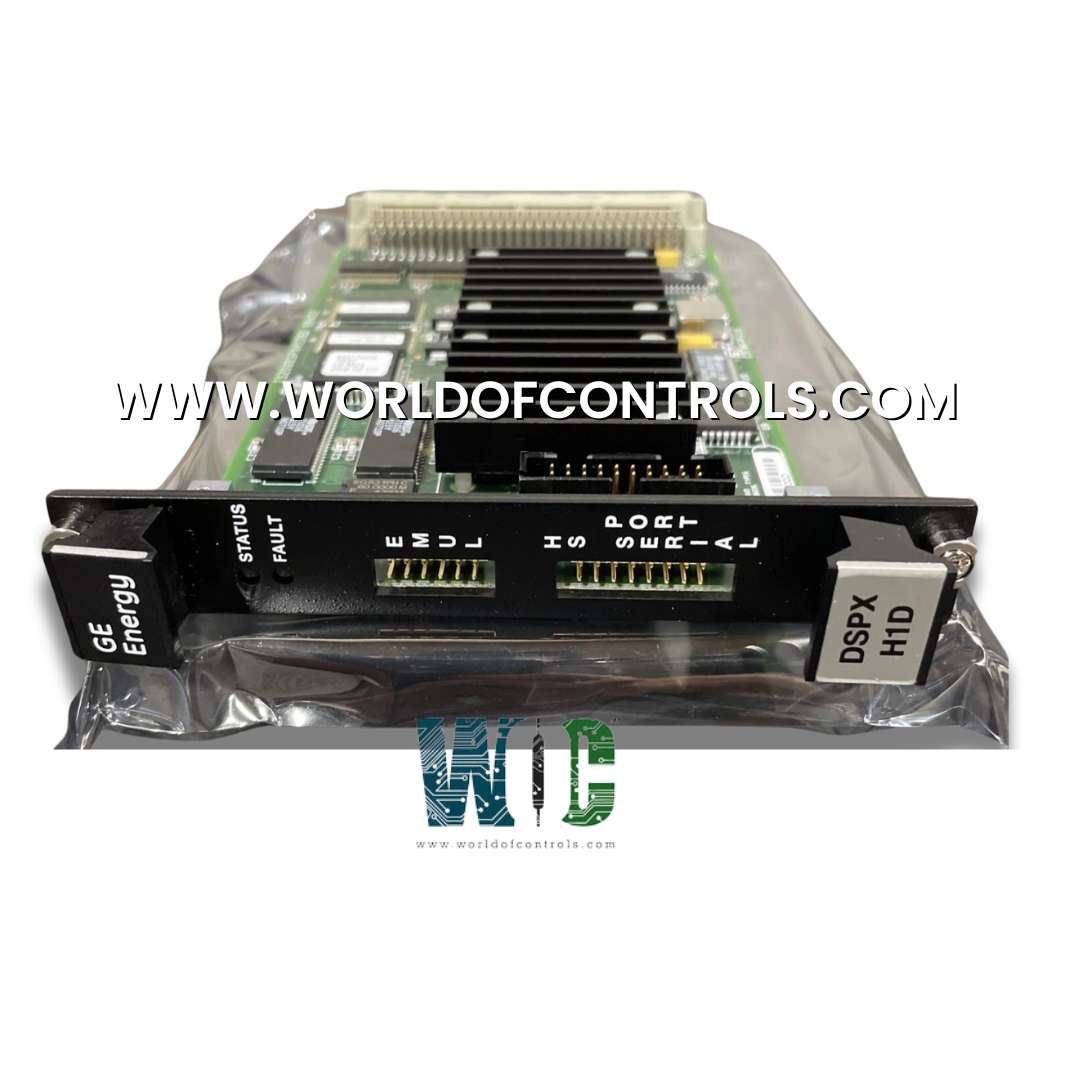
World Of Controls understands the criticality of your requirement and works towards reducing the lead time as much as possible.
IS200DSPX2B - DSP Control Board is available in stock which ships the same day.
IS200DSPX2B - DSP Control Board comes in UNUSED as well as REBUILT condition.
To avail our best deals for IS200DSPX2B - DSP Control Board, contact us and we will get back to you within 24 hours.
Part No.: IS200DSPX2B
Manufacturer: General Electric
Series: EX2100
Temperature Operating: -30 to +65oC
Product Type: DSP Control Board
Availability: In Stock
Country of Manufacture: United States (USA)
IS200DSPX2B is a Digital Signal Processor Control Board developed by GE. It is a part of the EX2100 excitation system. It serves as a controller for bridge and motor regulation, gating functions in Innovation Series drives, and generator field control in the EX2100 Excitation Control System. The board plays a crucial role in logic processing, signal handling, and interfacing functions within these systems. Equipped with a high-performance digital signal processor (DSP), memory components, and an application-specific integrated circuit (ASIC), ensures optimized signal processing and real-time control for excitation and drive applications.
Equipped with multiple types of memory to enhance its operational capabilities:
These memory components allow the board to execute control operations smoothly while preserving historical data for diagnostics and maintenance.
The firmware on the board is stored in Flash memory and consists of three main types:
These firmware components ensure that the board can be customized and updated for various applications while maintaining a structured and reliable control environment.
The DSP Control Board is designed for seamless integration within the EX2100 Excitation System, providing:
World of Controls has the most comprehensive collection of GE EX2100 components. Please contact WOC as soon as possible if you require any extra information.
What is IS200DSPX2B?
It is a Digital Signal Processor Control Board developed by GE.
What are the specialized functions of the DSPX board?
The board utilizes custom logic in Field Programmable Gate Arrays (FPGA) or ASICs to handle specialized functions efficiently.
How many serial interfaces does the DSPX board have?
The board provides four serial interfaces. Two 5 Mb/s ISBus interfaces (can function as master or slave). One asynchronous TTL interface for a PC-based configuration tool. One asynchronous TTL interface for a programmer board.
What is the function of the synchronizing load pulse signals?
The inner loop load pulse Captures I/O values (bridge, motor, generator voltages, current VCOs, tachometer counters, and discrete inputs). It also synchronizes ISBus channels, software, and gating outputs. Application loop load pulse Captures values of other application VCOs and optionally the tachometers, operating at a multiple or sub-multiple of the inner loop load pulse.
How does the board synchronize with other system components?
It synchronizes I/O signals, ISBus channels, software processes, and gating outputs using load pulse signals for real-time data capture and control.